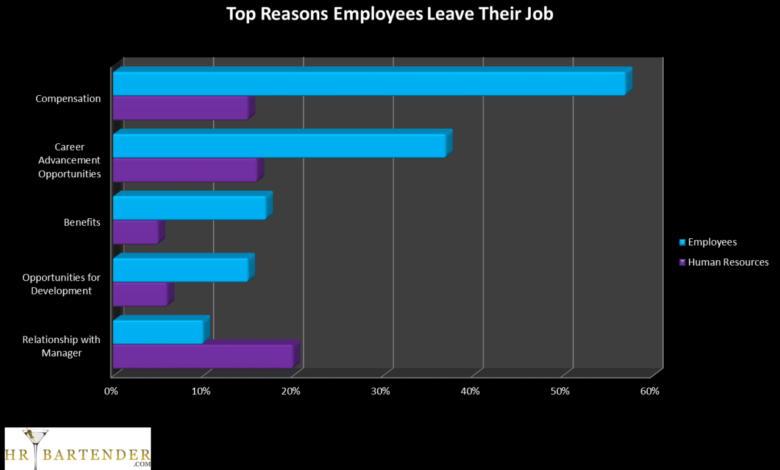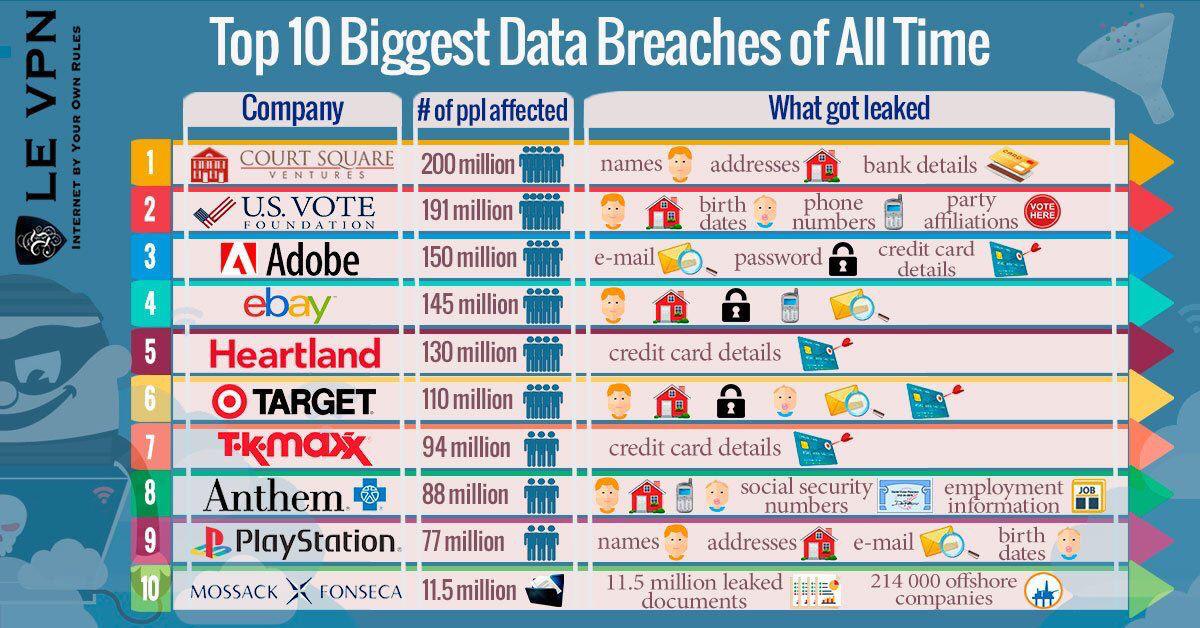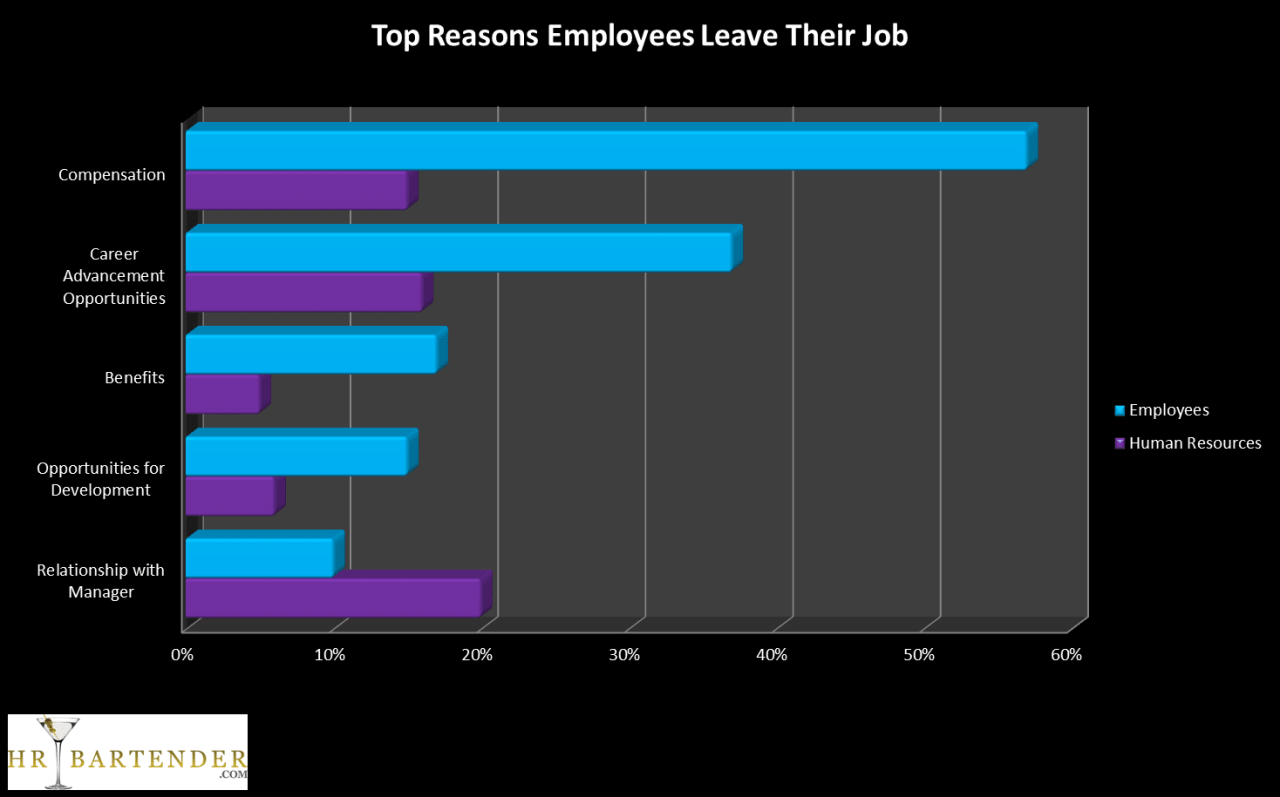
5 Reasons Why Your Employees Are Your Companys Cybersecurity Weak Link
5 reasons why your employees are your weakest link for your companys cybersecurity – 5 Reasons Why Your Employees Are Your Company’s Cybersecurity Weak Link – that’s a pretty scary headline, right? But it’s a reality for many businesses. We often focus on firewalls and encryption, but the human element is often the biggest vulnerability. This post dives into the top five reasons your employees might be unintentionally opening the door to cyberattacks, and what you can do about it.
From weak passwords and neglecting crucial security training to overlooking unpatched software and fostering a weak security culture, we’ll explore the common pitfalls and offer practical solutions to strengthen your company’s overall cybersecurity posture. Get ready to rethink your approach to employee security!
Lack of Security Awareness Training
Insufficient cybersecurity training for employees is a major vulnerability for any organization. A lack of awareness leaves companies exposed to a wide range of threats, from simple phishing scams to sophisticated malware attacks, ultimately leading to data breaches, financial losses, and reputational damage. The cost of a data breach extends far beyond immediate financial losses; it includes the time and resources spent on investigation, remediation, and legal fees, not to mention the long-term impact on customer trust.
Consequences of Insufficient Cybersecurity Training
Inadequate training leaves employees susceptible to various cyber threats. For example, employees unfamiliar with phishing techniques might easily fall prey to convincing emails containing malicious links or attachments. This can lead to malware infections, data theft, and compromised accounts. Furthermore, a lack of understanding regarding safe browsing habits can result in accidental exposure to malicious websites, leading to similar consequences.
Finally, employees who aren’t trained on proper password management practices are more likely to create weak passwords, making their accounts vulnerable to brute-force attacks.
Examples of Realistic Phishing Scams
One common phishing tactic involves spoofing legitimate organizations. Imagine an email seemingly from your bank, urging you to update your account information by clicking a link. This link could lead to a fake login page designed to steal your credentials. Another example is a phishing email that appears to be from a well-known online retailer, informing you of a supposed package delivery issue requiring immediate action.
Clicking the link might download malware onto your computer. Employees might fall victim due to the urgency created in these emails, or because the emails appear authentic due to sophisticated spoofing techniques.
Hypothetical Employee Training Program
A comprehensive employee training program should cover various aspects of cybersecurity. A crucial component would be password security training. This would involve educating employees on creating strong, unique passwords, using password managers, and understanding the importance of multi-factor authentication. Another vital aspect is training on social engineering tactics. This would include real-world examples of phishing, baiting, and pretexting scams, equipping employees to identify and report suspicious emails, messages, or requests.
The program would also cover safe browsing practices, secure Wi-Fi usage, and the importance of reporting security incidents promptly. Regular refresher courses and simulated phishing exercises would reinforce learned concepts.
Effectiveness of Different Training Methods
| Training Method | Cost | Engagement | Effectiveness |
|---|---|---|---|
| Online Modules | Low | Moderate | Moderate |
| In-person Workshops | High | High | High |
| Gamified Training | Moderate | High | High |
| Simulated Phishing Exercises | Low | High | High |
Weak Password Practices

Let’s face it: weak passwords are a gaping hole in your company’s cybersecurity defenses. They’re the low-hanging fruit that hackers readily pluck, often leading to data breaches, financial losses, and reputational damage. Ignoring this vulnerability is simply irresponsible. Understanding the risks associated with weak passwords and implementing robust password management strategies is crucial for safeguarding your organization.Weak or reused passwords create significant vulnerabilities because they are easily guessed or cracked using readily available tools.
A simple password like “password123” or a variation of a name or birthday can be compromised in seconds. This allows attackers to gain unauthorized access to sensitive company data, customer information, and internal systems. The consequences can range from minor inconveniences to catastrophic failures.
Password Strength and Uniqueness, 5 reasons why your employees are your weakest link for your companys cybersecurity
Strong passwords are characterized by their length, complexity, and uniqueness. They should be at least 12 characters long, incorporating a mix of uppercase and lowercase letters, numbers, and symbols. Using a password manager is highly recommended to generate and securely store these complex passwords. Critically, each account should have a unique password. Reusing the same password across multiple platforms (email, banking, work accounts) creates a cascading effect: if one account is compromised, all others using the same password are instantly vulnerable.
Consider the consequences of a hacker gaining access to your email account – they could then use password reset features to compromise other accounts linked to that email.
Risks Associated with Password Sharing and Reuse
Sharing passwords, even within a team, introduces a major security risk. If one person’s account is compromised, the entire team’s access could be at risk. This is especially critical for accounts with administrative privileges. Furthermore, reusing passwords across multiple accounts creates a domino effect. If a hacker gains access to one account, they have a potential pathway to many others.
Imagine the damage if a hacker gains access to your company’s email system using a weak, reused password – they could then access financial records, customer databases, and sensitive internal communications. The consequences can be devastating.
A Secure Password Management Strategy
The illustration above demonstrates a secure password management strategy. It begins with the crucial step of choosing a strong, unique password for each account. This is facilitated by using a password manager, which generates strong passwords and securely stores them, providing easy access without compromising security. The avoidance of password reuse is paramount, minimizing the risk of compromise across multiple accounts.
The ultimate goal is to achieve an improved security posture for all online accounts.
Negligence in Handling Sensitive Data
Employee negligence is a significant cybersecurity threat, often leading to data breaches with devastating consequences. It’s not about malicious intent; it’s about unintentional mistakes made by well-meaning individuals who lack awareness of the risks associated with handling sensitive data. This often stems from inadequate training, unclear policies, or simply a lack of understanding of the potential impact of their actions.Employees, unaware of the potential ramifications, often make mistakes that compromise sensitive company data.
This carelessness can be a far greater threat than a targeted cyberattack. The cost of such negligence extends far beyond immediate financial losses; it can damage reputation, erode customer trust, and even lead to legal repercussions.
Common Mistakes in Handling Sensitive Data
Employees frequently fall victim to phishing scams, clicking on malicious links in emails or opening infected attachments. This often grants unauthorized access to company systems and sensitive data. They might also leave laptops or mobile devices containing sensitive information unattended in public areas, making them vulnerable to theft. Another common error is sharing sensitive data through unsecured channels, such as personal email accounts or unencrypted messaging apps.
Finally, inadequate password management, already discussed previously, also contributes significantly to data breaches stemming from employee negligence.
Repercussions of Data Breaches Caused by Employee Negligence
The consequences of data breaches resulting from employee negligence can be severe and far-reaching. Financially, companies face costs associated with investigations, legal fees, regulatory fines (like GDPR penalties), and the remediation of systems. Beyond the financial burden, reputational damage can be equally damaging. Loss of customer trust, a decline in stock value, and difficulty attracting new clients are all potential outcomes.
Furthermore, the company might face legal action from affected individuals or regulatory bodies. For instance, the Equifax data breach in 2017, partly attributed to employee negligence, resulted in billions of dollars in losses and significant reputational harm.
Implementing Data Loss Prevention (DLP) Measures
Implementing robust DLP measures is crucial to mitigate the risk of data breaches stemming from employee negligence. This involves a multi-layered approach. Firstly, clear and comprehensive data security policies must be established and communicated effectively to all employees. Regular security awareness training, including phishing simulations and best practice demonstrations, should be conducted. Secondly, access control measures should be implemented, restricting access to sensitive data based on the principle of least privilege.
Thirdly, data encryption should be employed for both data at rest and data in transit. Finally, monitoring tools should be deployed to detect and prevent unauthorized data access or transfer attempts. Implementing strong password policies, as previously discussed, also forms a vital part of a comprehensive DLP strategy.
Data Encryption Methods and Their Suitability
Several data encryption methods exist, each with varying levels of security and suitability for different data types. Symmetric encryption, using the same key for encryption and decryption, is generally faster but requires secure key exchange. Examples include AES (Advanced Encryption Standard) and DES (Data Encryption Standard). Asymmetric encryption, using separate keys for encryption and decryption, offers better key management but is computationally more intensive.
RSA (Rivest-Shamir-Adleman) is a widely used asymmetric encryption algorithm. Hybrid encryption methods, combining symmetric and asymmetric encryption, offer a balance between speed and security, often used for securing email communications. The choice of encryption method depends on factors such as the sensitivity of the data, the performance requirements, and the key management infrastructure. For example, AES might be suitable for encrypting large databases, while RSA could be used for securing digital signatures.
Unpatched Software and Devices

Outdated software and unpatched devices represent a significant cybersecurity vulnerability for any organization. These systems act as open doors for malicious actors, allowing them to gain unauthorized access to sensitive data, disrupt operations, and even cripple entire networks. The longer these vulnerabilities remain unaddressed, the greater the risk becomes.The risks associated with using outdated software and unpatched devices are multifaceted.
So, you’re thinking about those five reasons why your employees are your weakest link in cybersecurity? It’s a tough nut to crack, especially when you consider the ever-evolving threat landscape. But building secure, efficient internal applications can help mitigate risk; that’s where learning more about domino app dev, the low-code and pro-code future , comes in. Ultimately, empowering your team with the right tools can improve security awareness and reduce those employee-related vulnerabilities.
Addressing those five reasons starts with smart technology choices.
Outdated software often contains known security flaws that have been identified and documented by security researchers. These flaws can be exploited by cybercriminals to gain access to systems, steal data, install malware, or launch denial-of-service attacks. Unpatched devices, similarly, present gaping holes in a company’s security posture, allowing attackers to bypass security measures and compromise sensitive information.
This lack of patching can lead to significant financial losses, reputational damage, and legal repercussions.
Examples of Vulnerabilities Exploited Through Outdated Software
Numerous examples illustrate the dangers of unpatched software. The infamous WannaCry ransomware attack in 2017, for instance, exploited a vulnerability in older versions of Microsoft Windows. This vulnerability, known as EternalBlue, allowed the ransomware to spread rapidly across networks, encrypting files and demanding ransom payments. Another example is the Heartbleed vulnerability (CVE-2014-0160), which affected OpenSSL, a widely used cryptographic library.
This vulnerability allowed attackers to steal sensitive information, such as passwords and private keys, from affected systems. These are just two high-profile examples; countless other vulnerabilities are exploited daily due to a lack of timely software updates.
Implementing a Software Patching Policy
A robust software patching policy is crucial for mitigating the risks associated with outdated software and unpatched devices. Here’s a step-by-step guide for implementation:
- Inventory: Conduct a thorough inventory of all software and devices across the organization. This includes operating systems, applications, and network devices.
- Prioritization: Prioritize patching based on risk. Critical systems and applications requiring immediate attention should be patched first.
- Testing: Before deploying patches to production environments, test them thoroughly in a controlled environment to ensure they don’t introduce new problems.
- Scheduling: Establish a regular patching schedule, such as weekly or monthly, to ensure timely updates.
- Automation: Automate the patching process as much as possible using tools that can scan for vulnerabilities, download patches, and deploy them automatically.
- Monitoring: Continuously monitor the effectiveness of the patching process and make adjustments as needed.
- Communication: Clearly communicate the patching policy to all employees and provide training on its importance.
Top Five Most Critical Software Vulnerabilities and Their Potential Impact
The impact of software vulnerabilities can be devastating. Here are five examples, illustrating the potential consequences:
- Remote Code Execution (RCE): Allows attackers to execute arbitrary code on the victim’s system, potentially giving them complete control.
- SQL Injection: Allows attackers to manipulate database queries to access or modify sensitive data.
- Cross-Site Scripting (XSS): Allows attackers to inject malicious scripts into websites, potentially stealing user credentials or redirecting users to phishing sites.
- Denial of Service (DoS): Overwhelms a system with traffic, making it unavailable to legitimate users.
- Buffer Overflow: Exploits memory management errors to execute malicious code, potentially leading to system compromise.
Lack of a Strong Security Culture
A strong security culture isn’t just about policies and procedures; it’s about embedding cybersecurity awareness into the very fabric of your company. When employees understand and value cybersecurity, they become active participants in protecting your organization, rather than unwitting vulnerabilities. A weak security culture, conversely, creates an environment where risky behaviors are tolerated, and security breaches are more likely.A company’s security culture significantly impacts its overall cybersecurity posture.
A culture that prioritizes security leads to proactive behavior from employees, resulting in fewer incidents and quicker responses when problems arise. Conversely, a weak security culture often leads to complacency, negligence, and ultimately, higher risk. This is why cultivating a robust security culture is not just advisable, but essential for any organization, regardless of size.
Fostering a Strong Security Culture
Creating a strong security culture requires a multi-pronged approach. It’s not a one-time fix but an ongoing process of education, reinforcement, and leadership commitment. This involves consistent communication, visible management support, and the implementation of clear and easily understood policies. The goal is to move beyond mere compliance to a genuine understanding and acceptance of security best practices as an integral part of daily work.
Promoting Cybersecurity Awareness
Effective cybersecurity awareness training goes beyond simply ticking a box. It needs to be engaging, relevant, and tailored to the specific roles and responsibilities of employees. Regular training sessions, interactive modules, and real-world examples can significantly improve employee understanding and engagement. Gamification techniques, such as simulated phishing exercises, can make learning more fun and effective, improving knowledge retention.
Furthermore, incorporating security awareness into regular meetings and newsletters helps to keep the topic top-of-mind. Regular updates on current threats and vulnerabilities also maintain relevance and emphasize the ongoing nature of cybersecurity.
Management’s Role in Establishing and Enforcing Security Policies
Management plays a crucial role in establishing and enforcing security policies. Their visible commitment to security sets the tone for the entire organization. Leaders must champion security initiatives, actively participate in training, and hold employees accountable for following established policies. This includes consistently enforcing penalties for security violations, not just as punishment, but as a reinforcement of the importance of security.
A clear and transparent disciplinary process is essential for maintaining a secure environment. Moreover, management should actively seek employee feedback on security policies and procedures to ensure they are practical and effective.
Company-Wide Communication Plan for Cybersecurity
A robust communication plan is essential for disseminating information about cybersecurity best practices and addressing concerns. This should include regular newsletters, company-wide emails, and posters promoting security awareness.
Regular reminders about password security, data handling procedures, and the importance of reporting suspicious activity are crucial.
Internal communication channels, such as intranet sites and team meetings, can be used to share security updates, announcements, and success stories. Open forums for employees to ask questions and share concerns should also be established to foster a culture of transparency and collaboration. The communication should be clear, concise, and tailored to different audiences within the organization, ensuring everyone understands their role in maintaining cybersecurity.
Conclusion: 5 Reasons Why Your Employees Are Your Weakest Link For Your Companys Cybersecurity
Protecting your company’s data isn’t just about technology; it’s about people. Addressing the human element of cybersecurity is crucial. By implementing robust training programs, enforcing strong password policies, promoting a security-conscious culture, and regularly patching software, you can significantly reduce your risk. Remember, a well-informed and security-aware workforce is your best defense against cyber threats. Don’t let your employees be your weakest link – empower them to be your strongest line of defense!
Clarifying Questions
What are the legal ramifications of a data breach caused by employee negligence?
Legal ramifications vary widely depending on location, industry, and the nature of the breach. Penalties can include hefty fines, lawsuits from affected individuals, reputational damage, and potential regulatory action. Consult legal counsel for specific guidance.
How can I measure the effectiveness of my employee cybersecurity training?
Use a combination of methods: pre- and post-training assessments, simulated phishing campaigns to test awareness, regular security audits, and employee feedback surveys. Track incidents and near misses to identify ongoing weaknesses.
What’s the best way to handle an employee who repeatedly violates security policies?
Progressive discipline is key. Start with verbal warnings, then written warnings, and consider further action up to and including termination depending on the severity and frequency of violations and company policy.
Are there any free or low-cost resources for cybersecurity training?
Yes! Many organizations offer free or low-cost resources, including online modules, webinars, and downloadable guides. Government agencies and non-profits often provide valuable materials. A quick online search will reveal many options.





